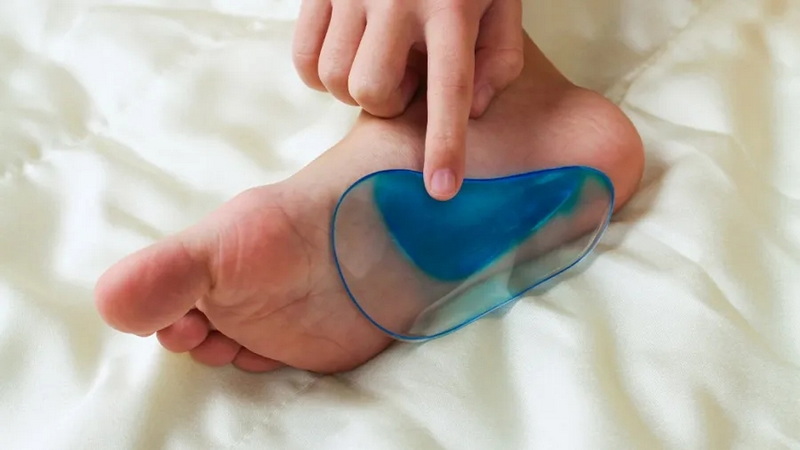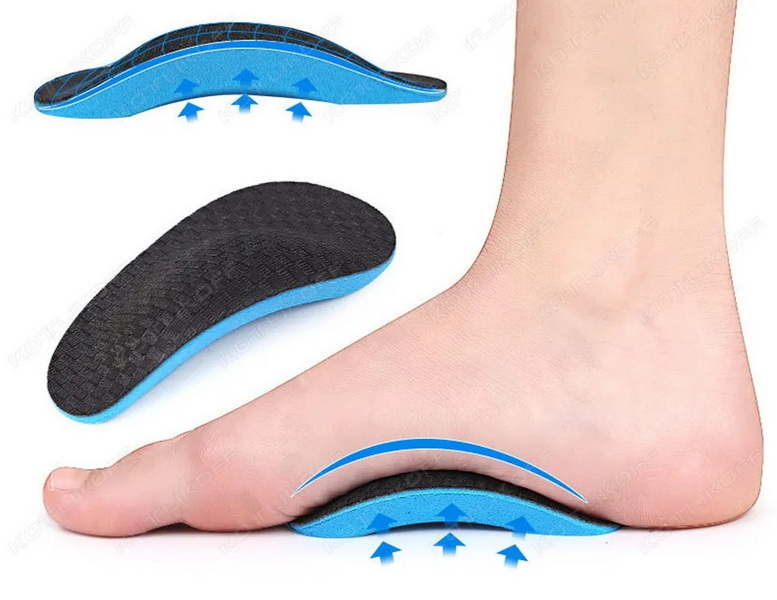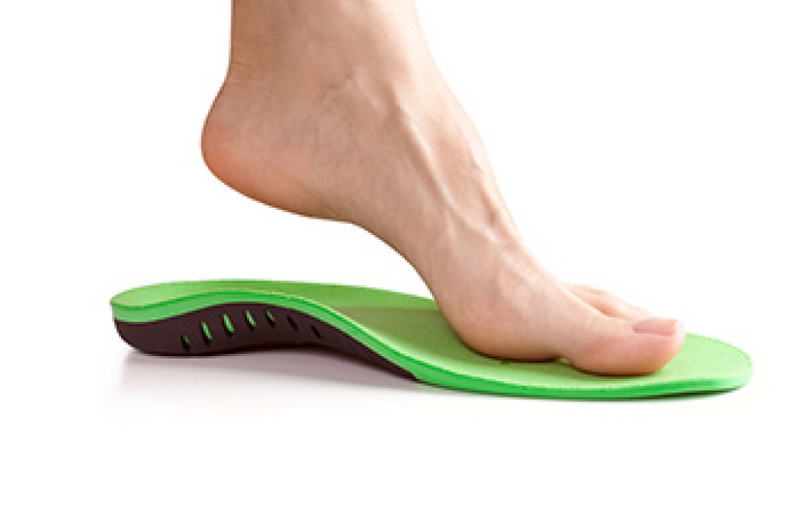Views: 222 Author: Edvo Publish Time: 2025-10-27 Origin: Site











Content Menu
>> Main Functions of Arch Inserts
>> Common Types of Arch Inserts
● Understanding Compression in Arch Inserts
>> The Balance Between Support and Flexibility
● Should Arch Inserts Compress with Each Step?
>> Benefits of Controlled Compression
● Material Selection and Compression Behavior
● How to Determine the Ideal Compression Level for Your Feet
>> Step 1: Assess Your Activity Type
>> Step 2: Understand Your Arch Type
>> Step 3: Test Before You Buy
● How Compression Affects Foot Health Long-Term
● Signs You Need to Replace Your Inserts
● How to Maintain Arch Inserts for Longer Lifespan
● The Role of Manufacturing Quality in Compression Performance
>> Our Quality Control Approach
● Practical Scenarios: Finding Your Perfect Level of Compression
>> Scenario 2: Professional Athlete
>> Scenario 3: Medical Patient with Flat Feet
● Common Mistakes When Choosing Arch Inserts
● Frequently Asked Questions (FAQs)
>> 1. Should arch supports feel firm or soft?
>> 2. Can excessive compression harm my feet?
>> 3. How long do high-quality arch inserts last?
>> 4. Are custom insoles better than ready-made ones?
>> 5. How do I know if my insoles have the right compression level?
When it comes to maintaining foot health and comfort, choosing the right arch inserts or orthotic insoles plays an essential role. These inserts are engineered to support the natural curvature of your foot while absorbing impact and redistributing pressure. A common question many people ask is: Should your arch inserts compress with each step?
The answer is not as straightforward as you might think. Compression can be both beneficial and detrimental, depending on the materials, foot type, and activities. This article explores how compression works in arch inserts, its advantages and disadvantages, and how to select the right insole that balances comfort, support, and durability.

Arch inserts, also known as orthotic insoles, are removable footbeds placed inside shoes to provide support, cushioning, and alignment correction. They are commonly used by athletes, workers, and individuals with medical foot conditions such as flat feet, plantar fasciitis, or overpronation.
- Provide structural support to maintain foot posture and alignment.
- Reduce pressure on joints such as ankles, knees, and hips.
- Enhance comfort during daily walking, running, or standing.
- Prevent injuries caused by repetitive stress or improper foot mechanics.
- Soft Cushion Inserts: Designed primarily for comfort and shock absorption, ideal for everyday wear.
- Semi-Rigid Inserts: Offer a balance between flexibility and structure, suitable for sports and long walking sessions.
- Rigid Orthotic Inserts: Designed for medical correction, offering firm support and alignment control.
Compression refers to the way an insert responds under pressure as you walk or run. When your body weight presses down, the insole material temporarily compresses, absorbing energy and cushioning your foot from impact.
- Human feet exert significant force—up to three times body weight—while running or jumping.
- Inserts made of foam, rubber, or gel deform to buffer shock.
- Controlled compression helps protect ligaments, muscles, and joints.
Good arch inserts maintain supportive structure while still offering flexibility. If inserts don't compress at all, they may feel too rigid, causing discomfort. However, excessive compression leads to instability and quicker wear.
The ideal insole should compress slightly with every step. This mild compression provides the necessary balance between shock absorption and stability.
1. Shock Absorption: Soft compression reduces the impact on the heel and forefoot.
2. Adaptive Fit: Slight compression molds the insole to your unique foot contours.
3. Improved Balance: Controlled flexibility enhances natural gait without interfering with stability.
4. Energy Return: Quality insoles provide rebound energy as they decompress, improving walking comfort.
1. Loss of Support: If the arch collapses too easily, your foot loses alignment stability.
2. Fatigue and Pain: Insufficient support can lead to leg fatigue, muscle strain, and even plantar fasciitis.
3. Short Lifespan: Materials that compress excessively wear out within weeks or months.
4. Reduced Efficiency: Energy is absorbed but not effectively returned, leading to inefficient movement.
In short, the arch insert should compress slightly, but the compression should always return to its original shape quickly. Durability and elasticity are key indicators of high-quality inserts.

Each material responds differently to pressure, affecting the degree and quality of compression.
| Material Type | Compression Behavior | Ideal Use | Durability | Comfort Level |
|---|---|---|---|---|
| EVA Foam | High compression, soft rebound | Daily wear | Moderate | Very comfortable |
| PU Foam | Moderate compression, excellent rebound | Sports shoes | High | Moderate |
| Gel | Medium compression, excellent shock absorption | Running, work boots | Moderate | High |
| Rubber | Limited compression, firm support | Orthopedic inserts | High | Low |
| Carbon Fiber | Minimal compression, rigid structure | Medical correction | Very high | Low |
The right choice depends on your activity level and foot condition. For example, runners often prefer PU or gel-based inserts that offer resilience without losing arch height, while medical orthotics use rigid carbon fiber structures for alignment correction.
- Casual walking or office work: Soft foam or gel inserts with moderate compression.
- Sports or running: Semi-rigid inserts with energy-return capability.
- Posture correction or flat feet: Rigid inserts with minimal compression.
- High arches: Require more cushioned inserts to distribute pressure.
- Flat feet: Need firm inserts that prevent arch collapse.
- Neutral arches: Benefit from medium compression with good shock absorption.
Stand or walk on the insert. It should feel supportive yet cushioned. If it flattens too easily, the compression may be too high. If it feels overly hard, compression may be insufficient.
When inserts are too rigid:
- Pressure builds on the heel and forefoot.
- The arch can feel strained, causing discomfort.
- Over time, this may lead to heel spurs or ankle stiffness.
When inserts compress excessively:
- The arch collapses temporarily under load.
- This alters foot mechanics, leading to pronation issues.
- Long-term use may cause chronic pain in the knees or hips.
Ideal compression supports the arch dynamically, cushioning impacts while maintaining proper alignment. Inserts should recover their shape immediately after compression, ensuring continuous support and shock absorption.
1. Flattened Arch Profile: When the arch no longer springs back.
2. Visible Creases or Cracks: Surface deformation indicates material fatigue.
3. Reduced Cushioning: If shoes feel harder or less comfortable.
4. Foot Pain Returns: Recurring discomfort suggests loss of support.
5. Odor or Moisture Damage: Indicates bacterial buildup and material deterioration.
In general, inserts should be replaced every 6–12 months depending on usage, weight, and environmental factors.
- Air Dry Regularly: Allow inserts to air out overnight to prevent material breakdown.
- Clean with Mild Soap: Avoid chemicals that can harden or deform the structure.
- Rotate Pairs: Alternate between two pairs to let one recover its elasticity.
- Avoid Excessive Heat: High heat can destroy the foam structure or adhesive bindings.
As a leading Chinese insole manufacturer providing OEM services for global brands and distributors, we ensure every product balances compression, durability, and biomechanical support.
- Using advanced molding techniques to control material density.
- Conducting compression resilience testing for consistent rebound.
- Offering custom compression ranges for sports, medical, and casual use.
- Ensuring international quality standards for export markets.
A soft to medium compression insert provides long-hour comfort without fatigue. Choose a foam or PU structure.
Opt for responsive semi-rigid materials with high rebound, improving motion efficiency during training.
Rigid orthotic inserts prevent arch collapse, maintaining correct alignment and reducing pain.
Soft inserts with gentle compression protect fragile joints and relieve heel pressure.
1. Selecting purely for softness: Comfort doesn't always equal support.
2. Ignoring shoe type compatibility: Inserts must fit properly inside footwear.
3. Overlooking material resilience: Some low-quality foams lose structure quickly.
4. Skipping professional assessment: Biomechanical consultation ensures the best match.
5. Using wrong insert for activity: Running insoles differ from dress shoe insoles.
Arch insert compression is essential for comfort and foot health, but it must remain controlled and balanced. Proper compression absorbs impact, enhances adaptability, and supports your feet through continuous use. Inserts that are too soft lose effectiveness, whereas those too rigid can cause stress and discomfort. Choosing inserts based on activity level, arch type, and material composition ensures long-term comfort and performance.
As a professional Chinese insole manufacturer providing OEM solutions worldwide, we prioritize developing arch inserts that combine optimal compression with structural stability — helping brands and customers achieve premium footwear support across diverse applications.

Arch supports should feel firm enough to prevent your foot from collapsing but cushioned enough for comfort. The right insert strikes a balance between structure and flexibility.
Yes. If an insole compresses too deeply, your arch may lose stability, causing pain in the legs, knees, and hips over time.
Premium inserts last between 9–12 months with normal use. For athletes or heavy users, replacement every 6 months is advised.
Custom insoles offer precise compression tailored to your foot's pressure pattern, while quality ready-made insoles are more affordable and suitable for general use.
Try walking on them for 10–15 minutes. If they feel supportive and bounce back quickly without flattening, the compression level is appropriate.